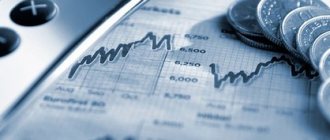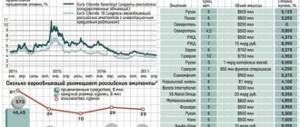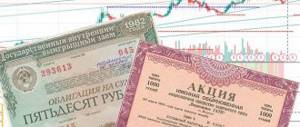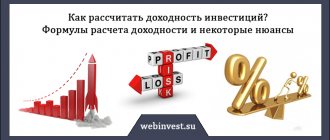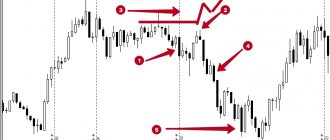Investment dynamics is usually understood as specific quantitative changes in the volume and speed of capital investments.
The essence of this financial concept will remain unchanged for any investment model. It is universal, that is, true at both the microeconomic and macroeconomic levels.
In other words, the concept of investment dynamics or development will remain the same for an individual, an enterprise, a state or the world economy as a whole. However, in financial science this term is usually used as one of the qualitative characteristics of the development of the state economy.
The emergence of investments
It is known that investments in the state arise from the distribution of national income into the consumed part and the saved part. Investments are formed from the saved portion. Logically, an increase in savings should lead to an increase in investment. This is what happens in underdeveloped countries. In them, economic growth is accompanied by an increase in savings, which are mostly channeled into investment. In economically developed countries this trend is not obvious. An increase in savings in them does not mean an increase in investment; this is explained by a fall in the rate of return on new investments in these countries.
The propensity to save leads to a decrease in consumption and a fall in the level of national income. Therefore, stimulating savings (the paradox of thrift) reduces the level of investment in the economy.
The English economist John Maynard Keynes studied these processes and came to the conclusion that it was necessary, as opposed to frugality, to stimulate consumption. Demand encourages investors to update production and expand it, which requires increased investment. Keynes introduced the multiplier theory into macroeconomics, according to which, when investment increases, the gross national product grows to a much greater extent than investment increases due to the multiplier effect of these investments. Investment generates consumption in related industries and infrastructure, causing new investment and increasing GNP. This level of increase was called the multiplier. It reflects the factors influencing the volume of investment in the macroeconomy.
For an individual object of savings, be it a corporation or an individual enterprise, the volume of investment is influenced, in addition to macroeconomic ones, by microeconomic factors.
These include:
- position of the enterprise in the market of manufactured products;
- market share of these products;
- prices for it;
- presence of serious competitors.
Enterprise performance indicators are also a factor in attracting investment, including the level of labor productivity and production organization. Investments usually increase the competitiveness of the company's products, which allows it to expand the volume of sales of its products and increase the amount of profit received.
Basic ways to minimize investment risks
Above, we have already mentioned two ways to minimize the risks that arise when investing. It's about diversification and hedging. At the same time, diversification refers to the formation of an investment portfolio as a whole, and hedging is associated with each financial instrument included in the portfolio separately.
Diversification
This method of minimizing risks works on the principle: don't put all your eggs in one basket. Diversification involves the formation of an investment portfolio in which the investor’s funds are divided between various investment objects with low correlation between each other.
Correlation in mathematics is the degree to which two quantities depend on each other. The more one of the quantities depends on the other (that is, a change in one of the quantities, one way or another, causes a change in the other), the higher the correlation between them. And vice versa, the less interdependence between quantities, the less their correlation.
For example, when forming a portfolio on the stock market, it includes not only shares of various companies, but also ensures that, if possible, they belong to areas of activity independent of each other. After all, if, for example, you create a portfolio of shares of only seemingly super-profitable oil producing and oil refining companies, then it will be highly susceptible to fluctuations in the oil market as a whole.
And the price of oil, especially recently, does not spoil us with either growth or stability:
Dynamics of Brent oil prices
I advise you to read more about diversification in these articles:
- Rules for creating an investment portfolio
- What is diversification - in simple words
Hedging
When the purchase of a financial instrument is accompanied by the simultaneous sale of a derivative on it (or, conversely, the sale is accompanied by a purchase), we speak of risk hedging.
Derivatives are derivative financial instruments, such as futures or options. For example, for shares of a particular company, a derivative financial instrument will be a futures contract on them.
Hedging is analogous to insurance and protects the transaction from unexpected losses, while the possible loss resulting from its implementation is a kind of insurance premium or payment for the absence of risk.
A simple example is hedging the currency risk that arises when purchasing a foreign currency through the simultaneous sale of futures on it (with full hedging, the volumes of purchase and sale transactions must be equal). Let's say you want to transfer part of your funds into foreign currency, but you are afraid that you may incur a loss due to the fact that the currency you purchased will greatly depreciate over time. Then, you buy a currency and simultaneously sell futures on it (in the same volume).
If after some time the foreign currency you bought actually falls in price, then this loss will be completely covered by the profit of the short futures position, and you will be left with your money.
If the currency you bought suddenly unexpectedly increases in price, then you will, in fact, lose part of your profit, expressed in the difference between the purchase rate and the current increased rate. However, this loss will be nothing more than a payment for the absence of the risk of losing much more money in the event of a depreciation of the purchased currency.
I recommend reading more about hedging here:
Risk hedging - in simple words
Investment policy
But a more important factor influencing the volume of investment of an enterprise is its investment policy. It includes an enterprise development strategy focused on long-term growth in production of products with high production profitability. This means that the investment plans of the enterprise are aimed at increasing its capital, predominantly on an innovative basis. This means the presence at the enterprise of marketing and investment management services, constant monitoring of the market and achievements of scientific and technological progress in the field of manufactured products and related industries.
Investment policy is based on the investment attractiveness of the enterprise, which consists of the investment attractiveness of the state, industry, region and the enterprise itself.
Investment attractiveness depends on many factors of the state's economy, such as: the level of taxation, inflation, economic stability, the availability of highly qualified labor, the level of criminalization of the economy, rates of return and the level of interest rates on financial instruments, and much more. All these factors are studied in the global economy and ratings of the investment attractiveness of countries are formed. Russia is at the bottom of the lists in these rankings, occupying 100th place out of 170 countries.
The essence of the phenomenon
Every state in its history has repeatedly experienced both periods of economic growth and times of decline. The rise of the national economy in every country is always accompanied by positive investment dynamics. This is reflected in the acceleration of the pace and increase in the volume of investment of funds. Details of the processes described can be found in the article “Investment and Economic Growth”.
Many financiers and economists adhere to the point of view that the dynamics of investment and the economic growth of the country are in direct proportion and mutual dependence. On the one hand, economic growth in itself stimulates the process of attracting financial investments. On the other hand, growing investments provoke the development of relevant sectors of the national economy.
On the contrary, periods of economic crisis are largely characterized by negative indicators of investment development dynamics. In other words, over these time periods, investments in the state’s economy are noticeably reduced.
Economic crises are often associated with the concept of investment depression. This phenomenon reflects the extremely passive state of the investment market. Such a depression occurs after a period of reduction in investment activity and is characterized by a zero value of investment dynamics. In other words, this is a state in which investments in the state’s economy are fixed at a low but stable level.
Investment depression can be considered as a kind of “bottom” or the point from which the growth of the country’s economy will begin. Naturally, for such a rise to begin, momentum is required. Usually they are new investments aimed at modernizing the country's national economy.
As you may have noticed, investment dynamics are cyclical or reciprocating in nature. The period of economic boom and recession develops into a closed investment cycle. The average normal duration of such a cycle is 8–12 years.
Some economists consider such economic cycles using the example of a circle. It is difficult to agree with this approach. A more relevant comparison is the spiral. In this model, the country’s economy, going through the next economic cycle, does not remain in place, but reaches a qualitatively new level.
Stages of acceptance
Any investment decisions, regardless of the investment object under consideration, are made in several successive interconnected stages.
- Identifying a suitable situation in which investing money will be most appropriate.
An incorrectly chosen time or direction of investment can lead to serious financial losses, including the loss of all funds invested in the project. At the initial stage, the decision-making is seriously influenced by the long-term and medium-term expectations of investors. - The second stage is associated with conducting a deep and comprehensive analysis of the investment decision. Here the completeness of the information collected by the analyst is of great importance.
- At the final stage, the investor, based on the information and specific conclusions made by analysts, makes an unambiguous decision.
In some sources you can find two additional stages. This is the implementation of the solution and further evaluation of its effectiveness. However, this is the wrong approach. These stages are not directly related to the formation and adoption of a decision. Rather, it is appropriate to talk about them as further stages of the investment process.
Important factors that influence
Financiers highlight several aspects that should be taken into account when making investment decisions.
- The prospects (attractiveness) of an investment object or its potential profitability. To determine it, an investor should pay attention to current trends in the development of financial markets. This will provide an overall picture of their condition in the long term.
- One of the main factors complicating making the right decision is the instability of the economic or political situation in the country. In such conditions, it is difficult to accurately determine the level of risk.
- The sufficiency of funds that the investor is willing to invest in the project under consideration. Often, the profitability of the selected project can directly depend on the amount of funding. At the same time, you should focus on your own internal sources of investment. After all, no matter how attractive an investment asset may seem, borrowed capital should be attracted to implement a project in exceptional cases. That is, in situations where the investor is 100% confident in the success of the chosen direction of movement.
B. Consumption and investment
1. The marginal propensity to consume is:
The ratio of total consumption to total income;
A change in consumer spending caused by a change in income;
A curve that characterizes the amount of consumer spending at a given level of income;
+ The ratio of the increase in consumer spending per unit of increase in disposable income;
All previous answers are incorrect.
2. The connection between the marginal propensity to consume and to save is expressed in the fact that:
+ Their sum is 1;
The relationship between them characterizes the average propensity to consume;
Their sum is equal to disposable income, since it is divided into consumption and savings;
The point on the curve at which they are equal corresponds to the income threshold;
Their sum is 0.
3. If people do not spend all their income on consumption and put the unspent amount in the bank, then we can say (using national income and product account terminology) that they:
+ Save, but do not invest;
They invest, but do not save;
They do not save or invest;
They both save and invest;
They save, but invest part of the savings, which is used to purchase securities.
4. “Individual savings” as a term used in the system of national accounts means:
The total amount of all family assets;
+ Income received for a certain period and not used for consumption;
The total amount of all the family's assets minus the amount of its liabilities;
Income received during a certain period and used only for the purchase of securities or deposited in a bank;
Income received for a certain period and not used either for consumption or for the purchase of securities, and also not deposited in the bank.
5. The “threshold level” point of the individual consumption function is the point at which:
Saving equals income;
+ Income equals consumption;
Saving equals consumption;
Consumption equals investment;
The marginal propensity to consume is 1.
6. Which of the following refers to the concept of “investment” in the system of national accounts:
Any purchase of a bond;
Any amount of accumulated income that is not put toward savings;
Any purchase of shares;
+ All previous answers are incorrect;
Answers "a", "b" and "c" are correct.
7. J. Keynes argues that the volume of consumer spending in a country depends primarily on:
From the consumer’s place of residence;
From the age of family members;
On the growth rate of money supply;
On the level of national income;
+ Based on the level of disposable income.
8. Which of the following relationships expresses an inverse relationship:
The relationship between consumer spending and disposable income;
+ The relationship between investment spending and the level of interest rates;
The relationship between savings and the level of consumer interest rates;
The relationship between investment expenditure and national income;
All previous answers are incorrect.
9. If the amount of disposable income decreases, then, other things being equal:
Both consumer spending and savings are growing;
Consumer spending is rising and savings are falling;
Consumer spending is falling and savings are rising;
+ Both consumer spending and savings are reduced;
All previous answers are incorrect.
10. If the amount of disposable income in a given country increases, then:
The average propensity to consume and save will increase;
Enterprise expenses
Investment expenses of an enterprise are the sum of all funds allocated for the creation and stable functioning of the investment project. Knowing the amount of such expenses, you can determine its cost.
Investment costs, or rather their volume, directly affect the level of profit extracted from the project. The lower the expenses, the higher the income.
The composition of an enterprise's investment expenses consists of:
- fixed capital (expenses for the creation of production infrastructure, fixed assets of the enterprise)
- net working capital (costs associated with maintaining the stable functioning of production, the so-called operating costs)
- organizational expenses (trademark registration, obtaining necessary permits, licensing procedures)
- expenses for project development (we are talking about investments in innovation)
- expenses for increasing inventories.
Acceptance Methods
Economic science knows about several methods for justifying and making investment decisions. Let's list them:
- methodology for discounting capital and profitability;
- calculation of net present effect;
- calculation of return on investment index;
- calculation of the rate of return on investment;
- determining the payback period for investments;
- calculation of investment efficiency ratio.


